This post contains affiliate links; see my PR disclosure policy for details.
One of my favorite scenes in the movie Julie & Julia is where Julie Powell (Amy Adams) types into her infant blog a reference to Julia Child’s famous words from the beginning of Mastering the Art of French Cooking — “Nobody here but us servantless American cooks.” Julia Child believed that with a little bit of instruction and a lot of good directions, servantless American cooks could pull off the preparation of traditional French dishes in their homes.
The same applies to our servantless home tablescaping — if you know the basic ingredients of a tablescape, you can create your version of even the fanciest decor, using what you already own. Granted, for some of us, our “stash” is larger than for others. If you don’t have quite what you need, you can pick up beautiful pieces for very little money on sale or in resale shops. Just follow any blog written by a home tablescaper and you’ll see hundreds of pieces purchased for a song. It makes me sad to find dish sets and linens that were given away by family members who didn’t want their grandma’s treasured home items, but I digress…
Over the holidays, Cost Plus World Market was carrying quite a few Downton Abbey-labeled products. Knowing my love for the show, I received a bottle of Downton Abbey wine, Downton Abbey soaps, Downton Abbey mince pies, and I also bought an Edwardian-style table runner and matching napkins that the store sold with the other Downton Abbey products. On sale, of course.
Then, on New Year’s Eve, our group of friends planned to have a 1920s-themed murder mystery party. It was actually a Chicago gangster mystery, but our hostess decided to use the book, The World of Downton Abbey, as her period reference for both her tablesetting and her costume.
The table was set using several sets of china and chargers, mixing and matching as many of us do these days. She would have been at the height of fashion in the Edwardian days.
“What does it mean if the China is mismatched? It means that you are at the home of a very wealthy person indeed, and that you should be mightily impressed. At the time, a mix-and-match approach showed status, because it meant you had more than one China set to play with. If all your pieces matched, it meant you only had one set of good China, which would put you in a more modest class” (source).
When I decided to create a tribute to Downton Abbey, I also chose to create a modern twist on an Edwardian table setting, just as we servantless home decorators often do.
I started by doing some actual research.
In the French style of service, it was believed that the foods’ relationships to one another were an important element of the dining experience, and main courses and side dishes were served together at the table. Unfortunately, the food often got cold by the time it was carried upstairs and then left on the table for service to the guests. The English style of service was used in both England and the United States through the late 1800s, and is similar to what we use today in our homes. “[A]ll the food belonging to one course is placed in suitable dishes before the host/ess and is served from the table” (source).
Moving to the Russian style of service
During the formal meals at Downton Abbey, we see the servants laying the table precisely prior for dinner — Carson is very much in charge! Then, as the meal progresses, we see Mrs. Patmore leading the staff through the dinner presentation, with each course being carried up the stairs by the footmen.
This was called Service à la Russe and would have been normal for a great house such as Downton. You can read lots more here about how England got to the point of using the Russian style of service.
“In Service à la Russe each course is presented one at a time and in a set order. It was not uncommon for there to be 14 different courses, each one being cleared away before the next one presented. The cutlery is pre-set and the table laid with empty water, wine and champagne glasses. Each setting had a service plate on top of which was placed the napkin, arranged in a creative way and every guest had his/her own place-name card of a fancy design” (source).
In addition to the precise placement of the cutlery, salt and pepper sets were placed between diners. Seating women and men alternately as equal partners at the dining table was a Dutch practice brought to England in the early 1800s.
Although Julian Fellowes has moved beyond the Edwardian era in the show’s storyline, and even though it’s 1922, Lord Grantham appears to be a little stuck in his ways when it comes to managing his household. The Edwardian era or Edwardian period in the United Kingdom is the period covering the reign of King Edward VII, 1901 to 1910, and the Granthams are still eating and entertaining as if it’s a couple of decades earlier than the beginning of the Roaring Twenties. We’re having fun seeing the play of modern and old-fashioned as Daisy and Mrs. Patmore struggle with an electric mixer and Lord G does his best to keep Mary out of management of the estate. And then there’s Lady Edith’s shenanigans!
Since the surface of the table in the Russian style of service was not crowded with food containers, there was room for more stuff on the table, and the design elements included central decorations, flowers, color and mirrors.
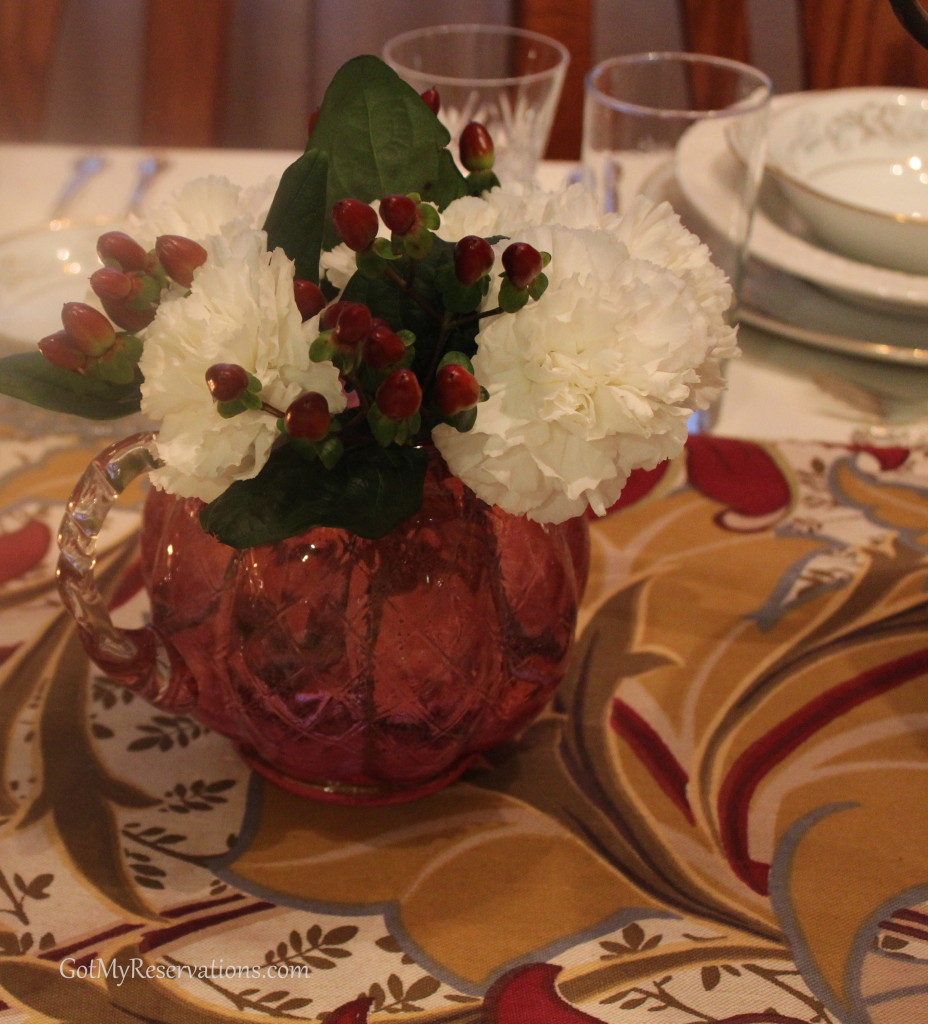
Inexpensive carnations and hypericon from the grocery store make a pretty floral display in a cranberry glass pitcher.
By the turn of the 20th century, the use of a heavy candelabra, large flower arrangements, and colored table runners and glassware added to the look (source).

The silver sugar and creamer candles were also a Christmas gift from our friends who live in the Cotswolds. So lovely!
Because of the number of courses in the Edwardian meal, desserts were often served plated, with the corresponding flatware to go with them. Today, a formal table usually includes the dessert silverware at the top of the plate.
Even in our servantless household, I often serve the dessert separately and deliver it to the table. I may also pass a plate of cookies or other sweets to go along with the main dessert.
I have included the tea and coffee service (in easy-to-care-for pewter rather than silver) that would have been on the sideboard and poured by the butlers. The English tea would always include a strainer for the loose tea as well as a creamer for both tea and coffee.
In researching this very fun-to-write post, I found several web sites that could prove useful if you decided to host your own Downton Abbey tribute meal. I plan to use the setting — with some informalities — for a Sunday brunch I am hosting.
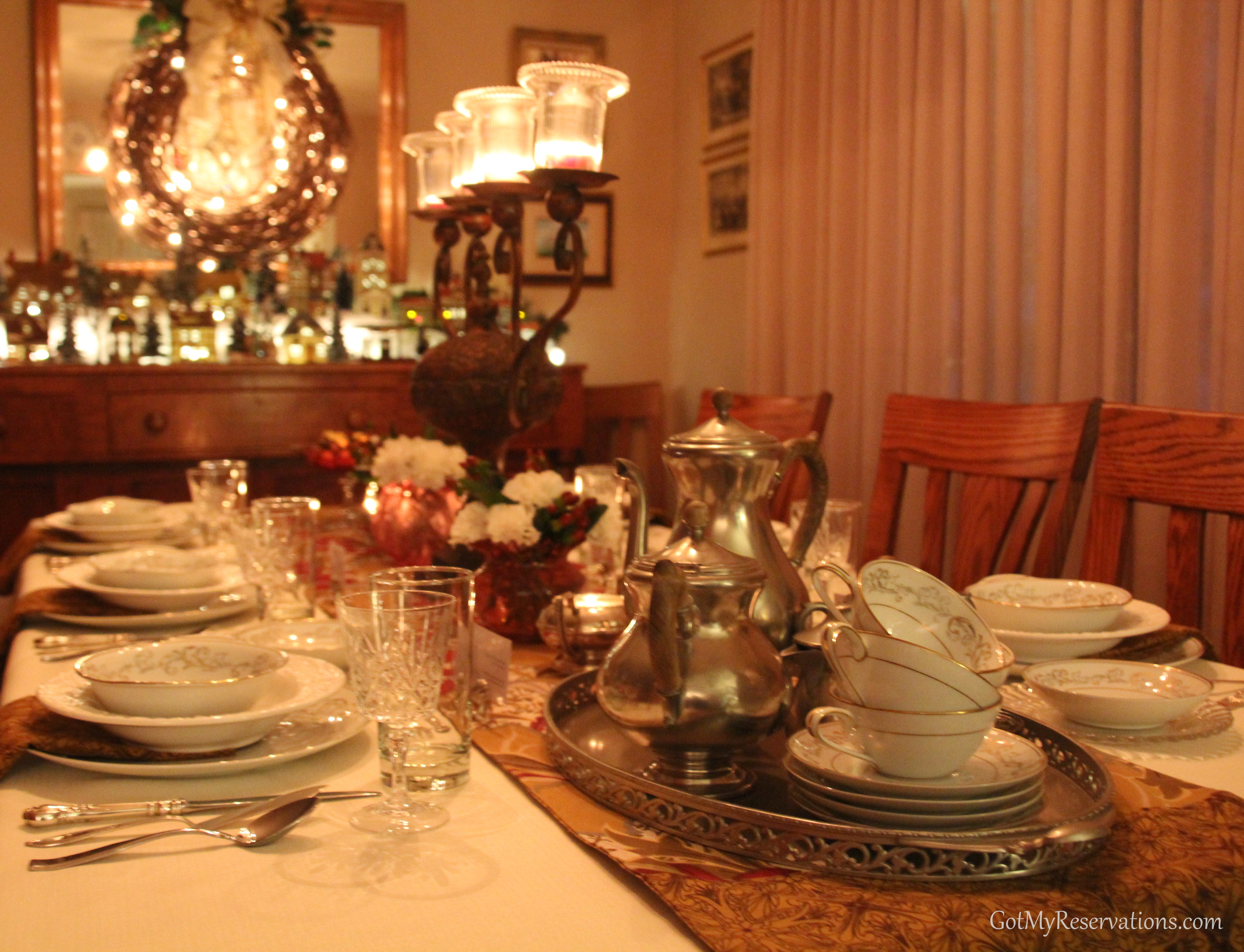
As you can see from my photos, I’ve kept most of my Christmas decorations up until after this last party — my last Christmas hurrah.
- Edwardian Promenade — Setting the Table
- Burnsville (MN) Patch — “Do’s and Don’ts of a “Downton Abbey” Dinner (Or: The Right Way to Eat a Cherry Tomato)”
- Setting the Edwardian-Era Table
- Edwardian and Victorian Dinner Parties
- How to Throw Your Own Downton Abbey-Style Christmas Dinner
- The Culture Concept: Downton Abbey Season 3 Begins — Everyone Loves A Wedding
- Pop and Circumstance: A Downton Abbey Dinner Party
I hope you enjoyed this look at how to recreate your own Downton Abbey tablescape, even if you are living in a servantless household. 🙂
I’m linking up today with the creative bloggers at The Scoop at Confessions of a Plate Addict, We Call It Olde at We Call It Junkin’, Centerpiece Wednesday at The Style Sisters, Open House Party with No Minimalist Here, and Tablescape Thursday at Between Naps on the Porch. Be sure to stop by and say, “Hello!”
Got my bags, got my reservations,
Spent each dime I could afford.
Like a child in wild anticipation,
I long to hear that, “All aboard!”
Music and lyrics by Bud Green, Les Brown and Ben Homer (1944)



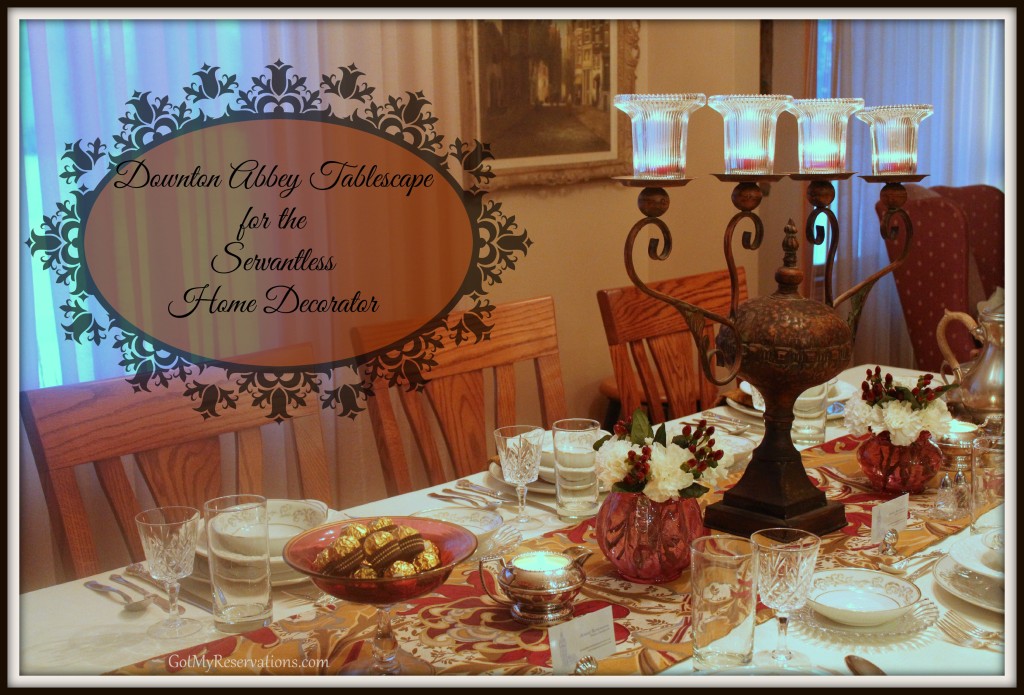
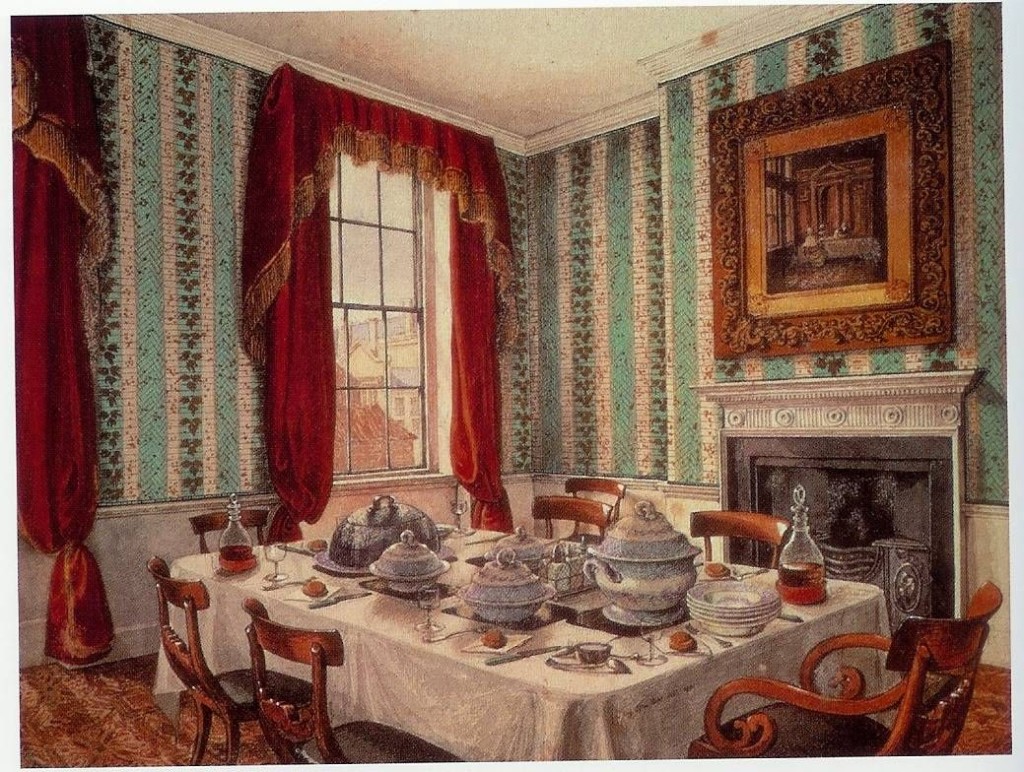
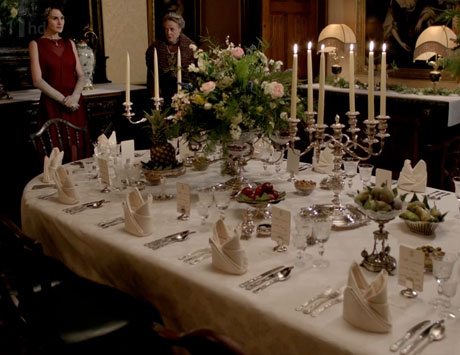

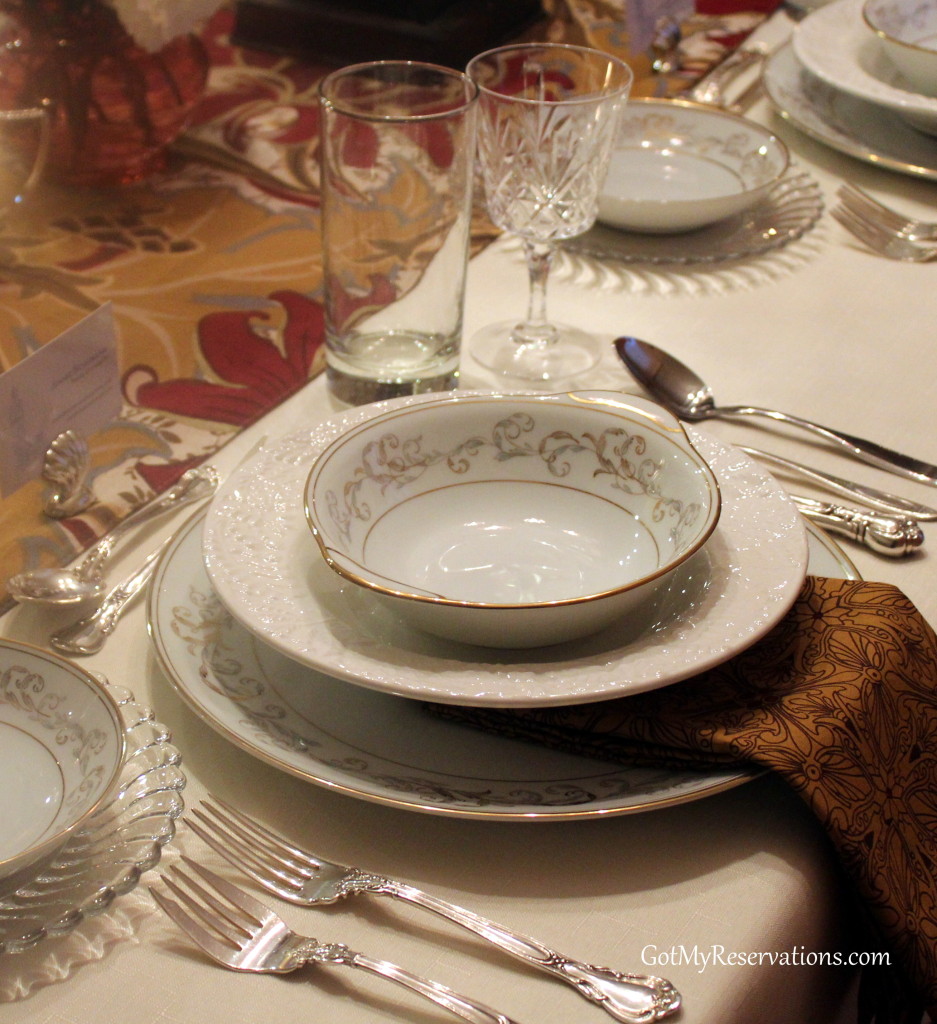
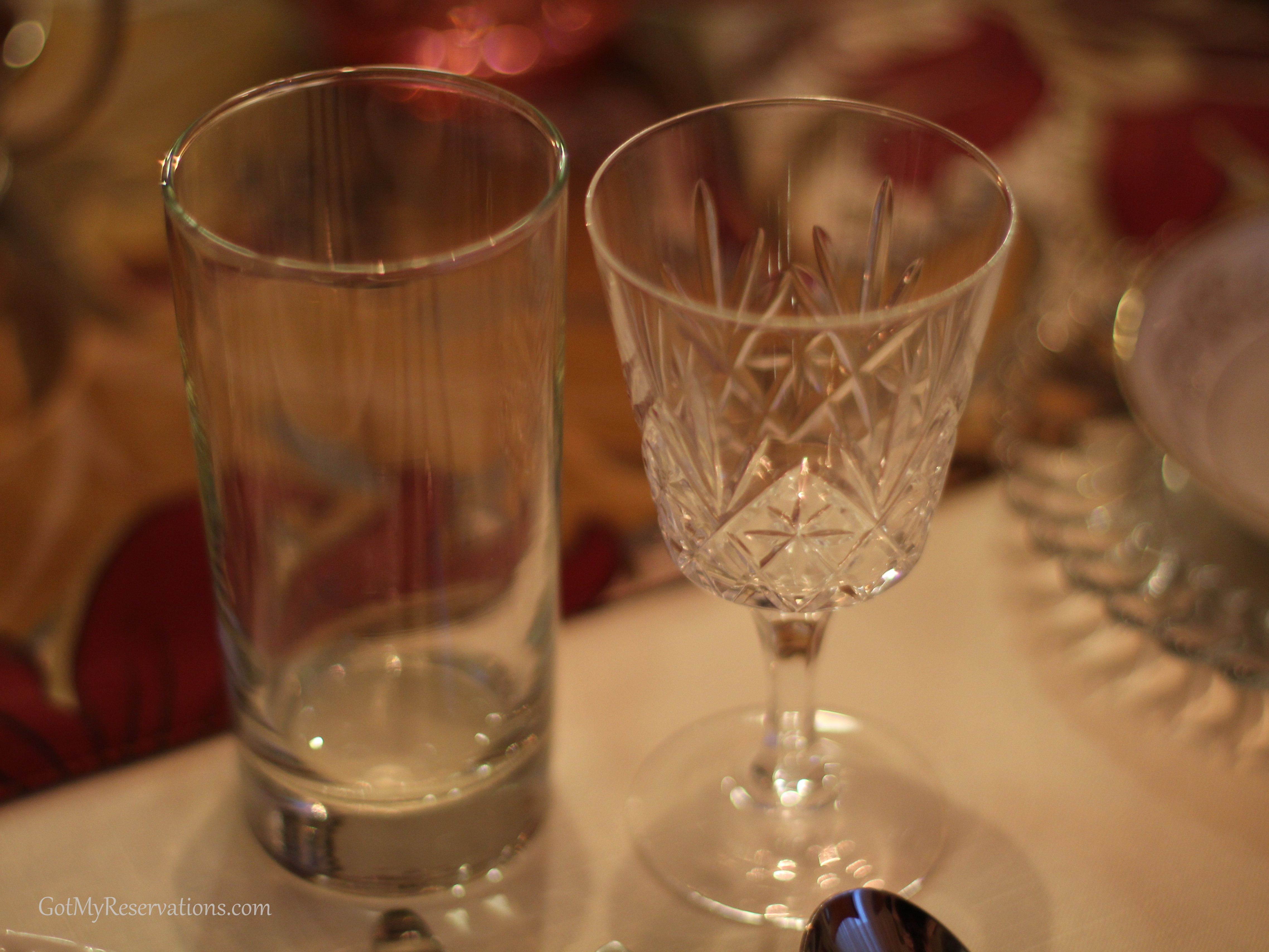


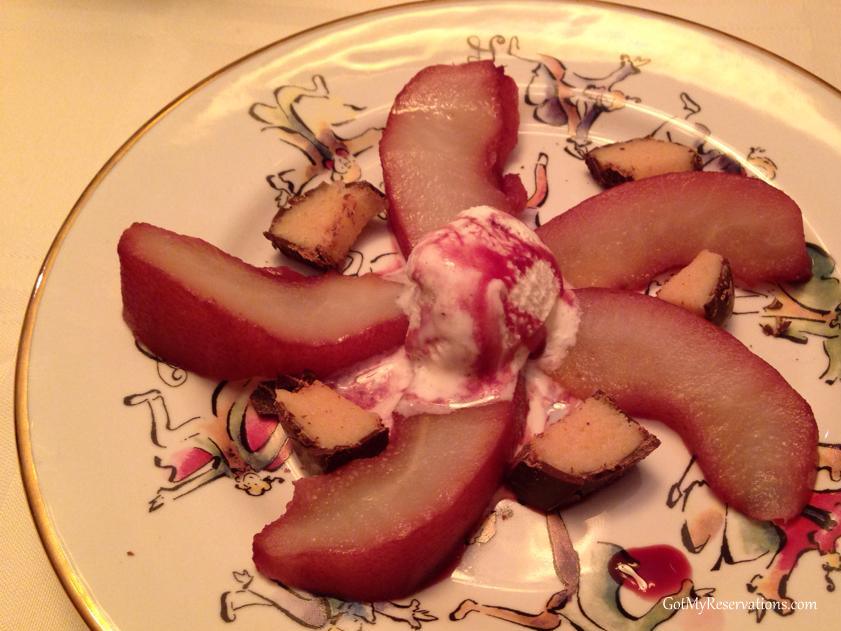
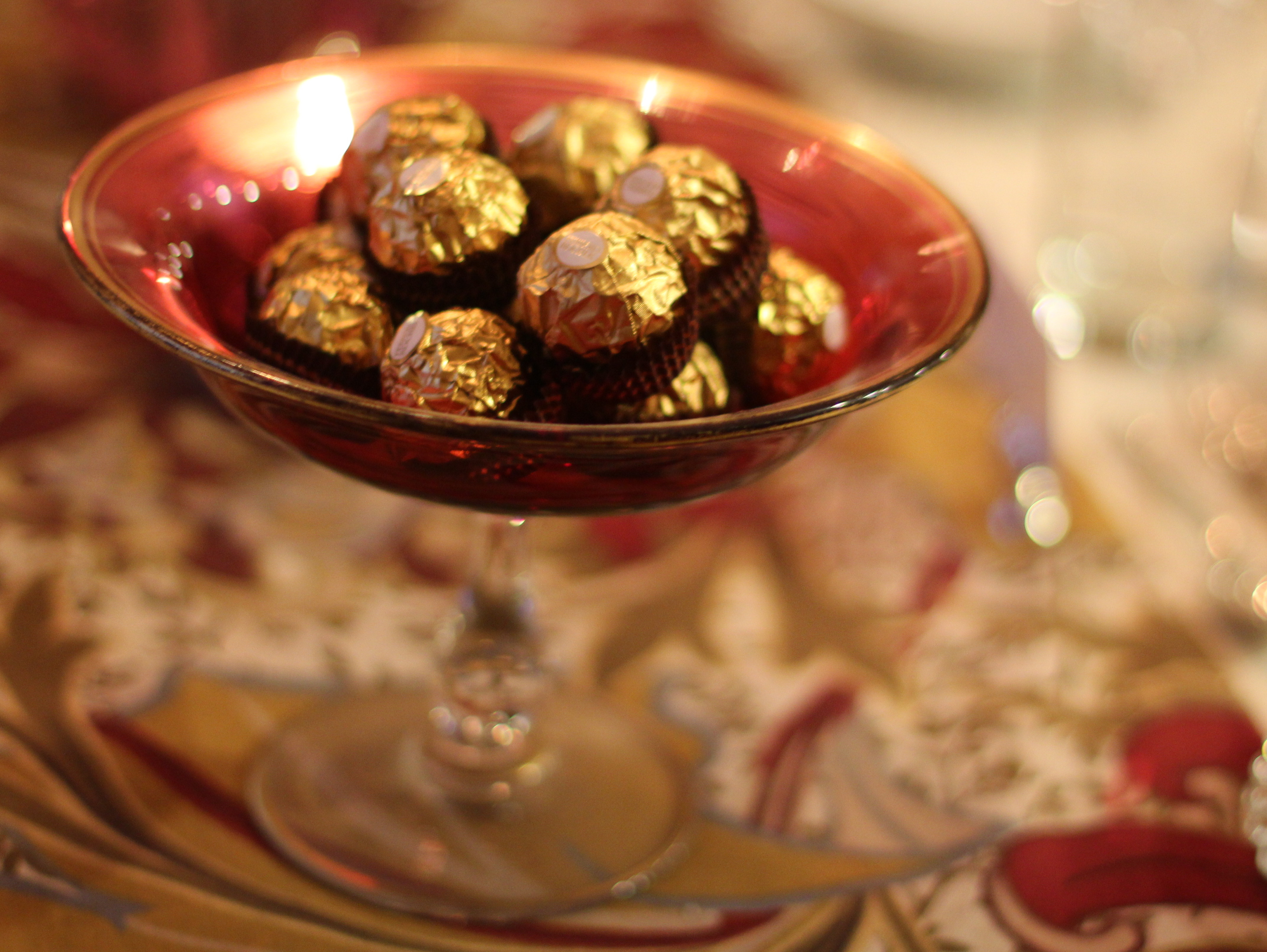
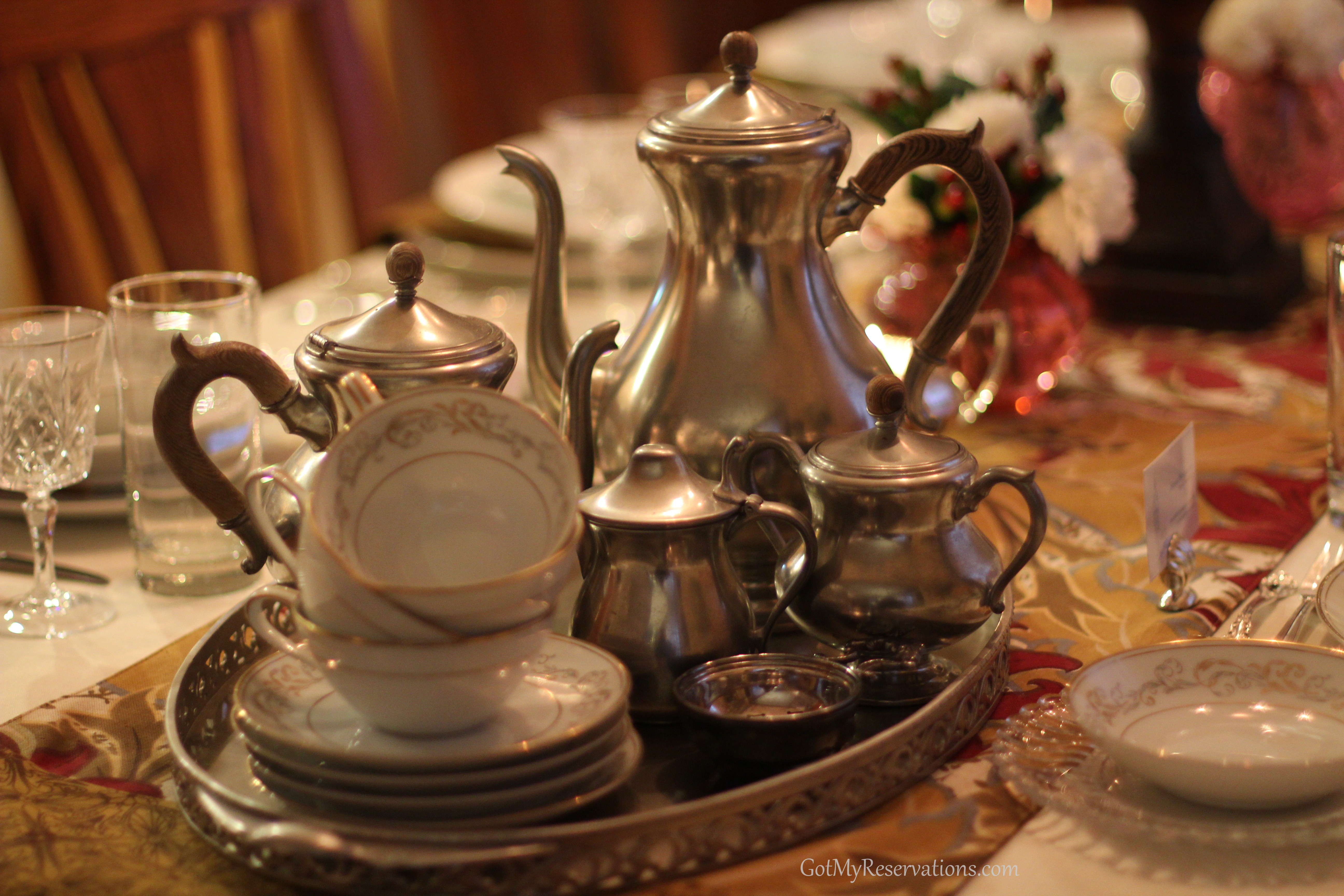

I loved your blog. It was fascinating, thanks for posting!
Thanks for visiting!
What a great post! It’s filled with so much interesting information. Being a Downton Abbey fan myself I was absorbed!
– Alma, The Tablescaper
I really enjoy the history of dishes as well as their beauty, so this was fun to write. Thanks for stopping by and leaving a comment, Alma!
Thank you for the interesting history lesson. 🙂 I love Downton Abby! But, who doesn’t, right? Thanks for sharing the lovely pictures along with your table. Your tea service is wonderful – never thought about pewter, but it’s really nice! I think soon I’ll do a mismatched china table. I’ve heard that’s all the rage with weddings these days – to rent mismatched china (for mega money) for each reception place setting. If you have multiple sets of china, maybe that’s a possible side business?! We should notify Alycia. 😉 OK, maybe not – we’d never see her in blogland again! I thoroughly enjoyed your wonderful post!
Kim
Kim, I thought of Alycia the entire time I was doing this setting — but she’s “out of” the business. She still has a lot of her inventory, though, and could easily do a mismatched table setting. I think it sounds like fun as well. Thanks for stopping by. Readers – if you don’t know Alycia, be sure to visit her at http://tabletwentyone.wordpress.com/
I loved your blog! I love Downton Abbey so this was such a treat. I have to say, I didn’t realized that I was so “wealthy”. I have been mixing things up because the only set of china I have for more that 6 is Christmas!
Thanks for visiting — and showing your wealth through your creative tablesettings!
What an interesting post. I enjoyed reading all of the information, and your table looks stunning. The dessert looks yummy. laurie
Thank you for your kind comment. My friend made the poached pears — she cannot eat gluten, so she made a gluten-free dessert for our party that was light and yummy as well as beautiful.
Great post! I have multiple sets of china so will be try mixing sets instead of using one pattern at a time.Also your four candle candelabra was beautiful!!!
Debbie, I bought that candlelabra for ten dollars at a local furniture store that was going out of business. It normally sits on my sideboard, but it was perfect for this tablescape! I do love a bargain.
Wow, Jennie, I think this is the best thing you’ve ever written perhaps, I really appreciate the time that went into it, and as a huge Downton Abbey fan, I loved all the tie-ins to the show! Definitely featuring this on my Link Party Features Pinterest board, and Pinning to a group Home Decor board as well, lots of folks need to see this. Thanks so much for sharing this at my History & Home link party. Take care – Dawn @ We Call It Junkin.com
Dawn, thank you for your kind words and your support. It was a lot of fun to write!
I lurk a lot on dish blogs but usually do not comment on them. Today I have to! This post was beautiful and absolutely amazing in all respects. Thanks for all the research you put into it. I especially loved seeing the Noritake Stanwyck china on your table since it’s one of my patterns. It is both simple and elegant. I recently found (at GW) 12 perfect, like-new damask napkins in that soft minty greenish aqua color which I plan to use with the china at Easter. What do you call that color, Jennie?
Li, it was very nice of you to take the time to comment — I really appreciate it! The story of my Noritake Stanwyck is kind of special — when my neighbor died, her kids didn’t want her china and they gave it to me. I have 30 bread and butter plates that I use for parties and more than 12 dinner plates, as well as smaller amounts of the rest of the pieces. I especially cherish the cream soup bowls and was thrilled to use them for my brunch yesterday. Every time I use this set, I remember her loving welcome when we moved into this neighborhood. As far as the blue color in the pattern, it is like a chameleon — in this setting, it picked up the grey in the table runner and didn’t look very blue. In other settings, it’s a beautiful soft aqua as you described it. I love this set and use it all the time.
Servantless? Servantless??? Wait a minute…you mean all of us out in blog land don’t have servants??!?!? That’s news to me? I have a whole household full of ’em! In fact, I had an ADDITIONAL upstairs built onto our house just so that we could have an upstairs-from-the-upstairs maid! 🙂
I still have never watched the show, but the whole aura of it spellbinds me nonetheless. I love to watch period movies just to witness all the pageantry of the time for everything from clothing to hairstyles to speech patterns to the dinner table. Oh, what dinner tables!!! I didn’t know the tidbit about setting the table with several different sets of china to show off one’s wealth. Hmmm…ostentatious, but I like it! 🙂 When I do it, it’s because I simply don’t have enough of a particular pattern, but from now on I’ll just say, “I’m doing the “Downton Abbey” style…because I can!” 🙂 🙂 🙂
What fun it must have been to get dressed up and step back in time like that! Everything was just beautiful! But where is the photo of YOU all gussied up?
At the party on New Year’s Eve, I just wore my classic black pants and shiny sweater look. I didn’t really get into the dressing up bit because I’m still in the knee rehab thingy and not spending a lot of time figuring out costumes. As far as mixing patterns of china, I’m pretty sure you could win the prize for most mis-matched patterns from your stash, Alycia. Thanks for spreading your bloggy cheer!
Pingback: The Morning After: Downton Abbey Brunch - Got My Reservations
Hi Jennie, I am visiting from your Winter Blue Tablescape. I missed this post somehow, it seems I have missed a lot lately. I love this post! I learned so much about place settings, I even bookmarked this post so I can come back and give credit for my new found knowledge when I use it. Like everyone else I love Downton Abbey and loved learning about there elegant life style. Thank you for sharing!!
Pingback: Winter's Blue Tablescape - Got My Reservations
Pingback: A Conversation about Tablescaping for Dummies - Got My Reservations